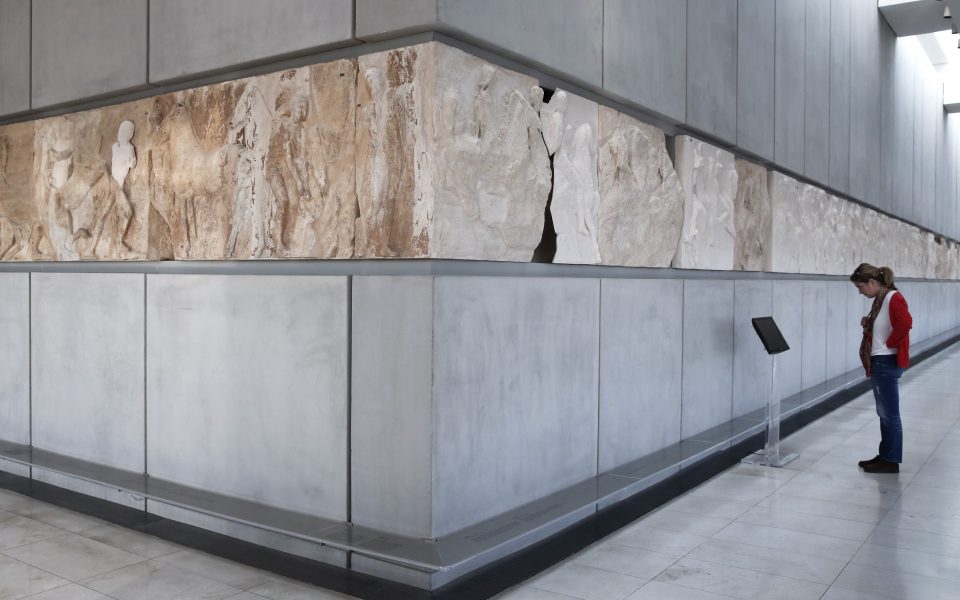The entire Parthenon frieze presented in new online app

The Acropolis Museum is now showing a synthesis of the entire Parthenon frieze, the 160 meter-long relief sculpture that adorned the upper part of the inner temple (cella), in an upgraded version of the web application www.parthenonfrieze.gr.
The iconic frieze, sculpted between c. 443 and 437 BC, depicts the Great Panathenaia, a religious festival that celebrated the birth of the Athena, patron goddess of ancient Athens. Made of Pentelic marble and depicting 378 figures and 245 animals, the high relief sculpture originally encircled the four sides of the cella, starting in the southwest corner.
Today, 128 meters of the original frieze survives, with the majority of the blocks (75 meters) on display at the British Museum in London. The remainder is at the Acropolis Museum in Athens (50 meters), while one block is on display in the Louvre and several fragments are in museum collections across Europe.
Available in Greek and English, the upgraded version of the app incorporates a series of new functions, enhancing user experience, and is fully accessible through mobile phones, laptops and computers. Developed in collaboration with the Acropolis Restoration Service and the National Center for Documentation and Electronic Content, it gathers together photographs and descriptions of all the blocks on display at the Acropolis Museum and abroad. Missing sections have been filled by the drawings of Jacques Carrey (1674) and James “Athenian” Stuart (1751), in order to give the fullest possible picture of the frieze.
The new app gives the general public unfettered digital access to this profoundly important collection of ancient Greek art. Well organized and user friendly, the app presents the historical context of the frieze, its general design and construction, and allows users to explore individual blocks on the four sides of the temple, or take six thematic tour of its scenes.
The app also features an in-depth guide to the Parthenon, presenting architectural drawings and diagrams, and short videos.
To use the app, go here.
Source: ekathimerini.com





